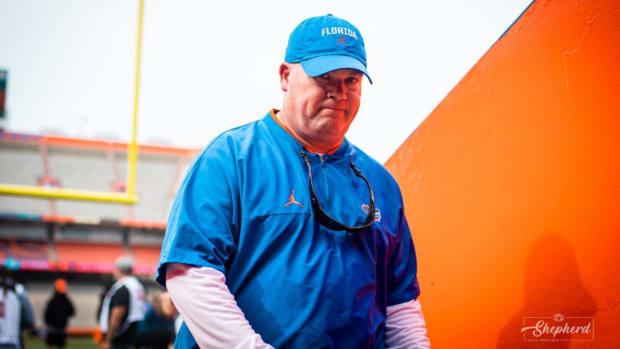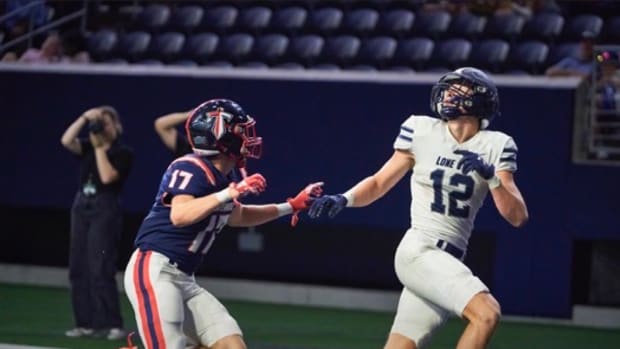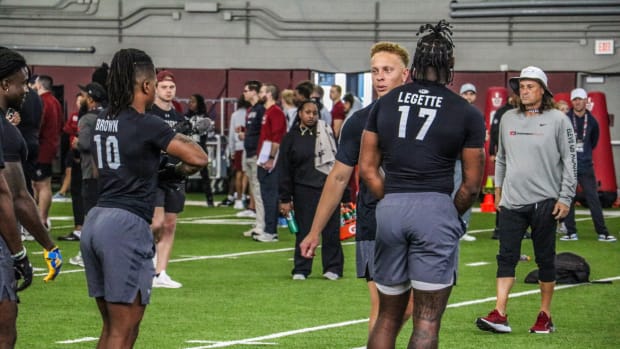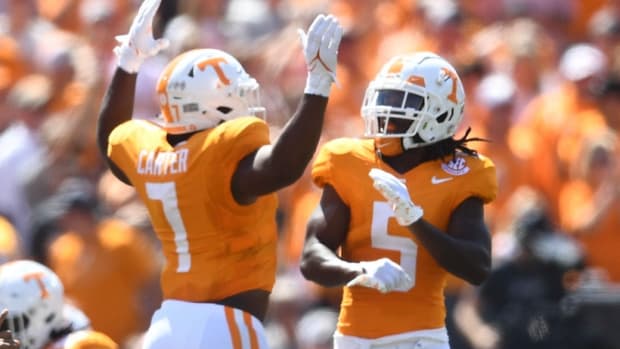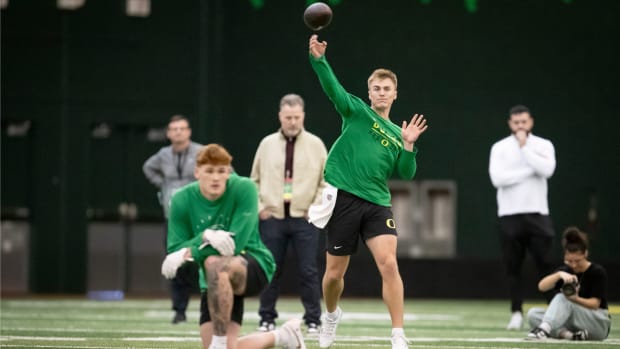Which Group of Five Teams Have Reachable Top-10 Ceilings?
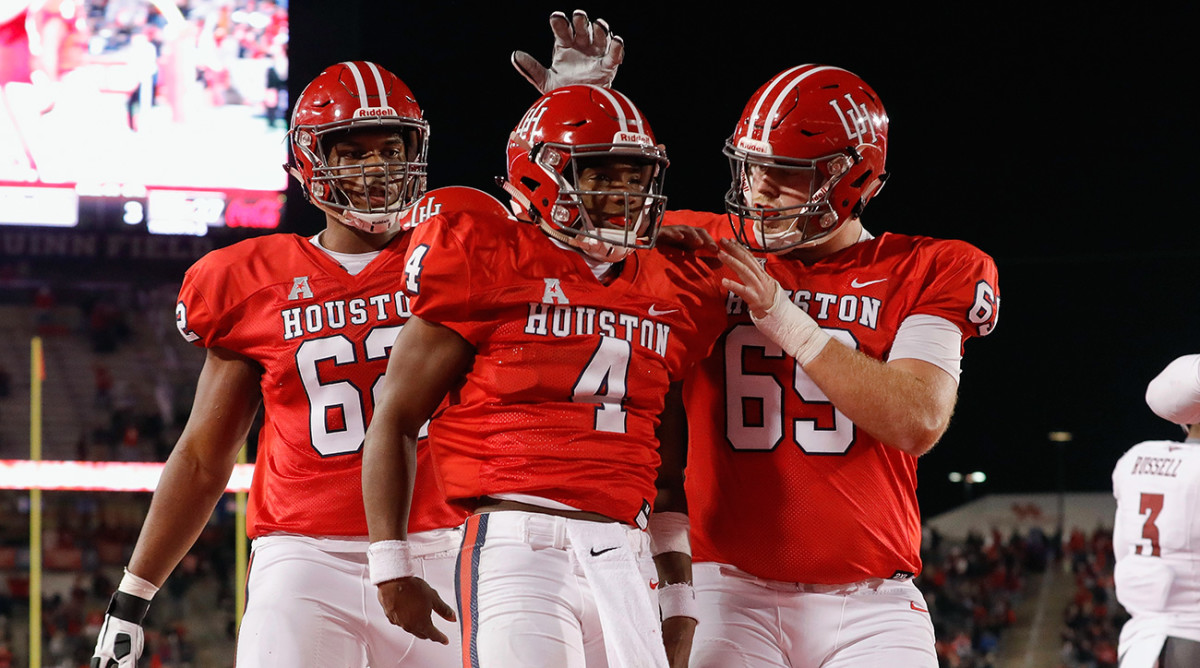
On New Year’s Day, UCF’s 25-game winning streak was snapped by a 40–32 Fiesta Bowl loss to LSU. The Knights were a month removed from being left out of the College Football Playoff after an unbeaten regular season for the second straight year. They enter the fall looking to start a new streak, albeit with a different quarterback under center, while the rest of the AAC and the best teams in the other Group of Five leagues try to mount worthy challengers to UCF’s stranglehold on the G5’s New Year’s Six bowl slot.
If we learned anything from UCF’s 2017 and ’18 seasons, it’s that it will require an act of God to get a Group of Five team into the playoff. A playoff hopeful would need to have the perfect alignment of talent, schedule and coaching—along with chaos at the Power 5 level—and that seems unlikely to occur this fall. But the best Group of Five teams still have a chance to spring some big upsets and climb the rankings to reignite the debates UCF sparked. With that in mind, let’s take a look at the three Group of Five teams with the best chance to crack the top 10 next fall:
UCF
The Knights will look a little different than the dominant outfit of the past two years, but they will keep making this list until they do something to show they no longer belong. Three-year starting quarterback McKenzie Milton, who led the Knights to a 23–0 record through all of 2017 and most of ’18, suffered a gruesome leg injury on the final week of the regular season that will force him to miss the upcoming season, and the battle to replace him comes down to redshirt sophomore Darriel Mack Jr. and Notre Dame graduate transfer Brandon Wimbush. Both are talented dual-threats (although Wimbush has a better recruiting pedigree and more experience than Mack), and the offense is loaded at the other skill positions. Although the defensive line struggled last year and has questions looming, UCF’s secondary is stacked.
If whoever wins the quarterback battle can establish himself early, UCF has the chance to make waves in September. The team has back-to-back games against Stanford (at home) and at Pitt; winning both would almost certainly lift the Knights from a respectable preseason ranking (likely somewhere in the mid-teens) into the top 10.
Houston
In its second and final season under coach Major Applewhite, Houston went 8–4 before getting annihilated in its bowl game, a 70–14 loss to Army. Within weeks, Applewhite was out, replaced by Dana Holgorsen, who has deep roots in Texas and the Houston area. In his first season, Holgorsen faces a tough path; Houston sees Oklahoma in Week 1 and Washington State in Week 3. So yes, there’s a chance this goes very poorly and the Cougars finish September at an uninspiring 3–2, or even 2–3 if Conference USA heavyweight North Texas catches them napping in Week 5. But should Houston evoke 2016 with a season-opening upset of Oklahoma or take down Washington State at home, or both, it has a chance to set up shop in the top 10 with a conference schedule that has enough teeth to garner some respect. With Cincinnati, UCF and Memphis on the docket, the Cougars will have to earn their way to the top of the AAC.
On the field, Houston should make its name on offense, as it did a year ago, when it averaged 43.9 points per game under the direction of coordinator Kendal Briles. Consider, too, that game-breaking quarterback D’Eriq King missed the season’s final two games with a torn meniscus, which makes the ineffectiveness against Army sting a tiny bit less and should provide some optimism for this season as he’s expected to make a healthy return. As a freshman in 2018, King passed for 2,982 yards and rushed for another 674, and there’s a real chance that under Holgorsen’s tutelage he becomes one of the most exciting quarterbacks in the country. On defense, though, the Cougars have plenty of holes to fill, most importantly the one left by All-America defensive tackle Ed Oliver. If Houston is going to make a splash in the fall, it’ll have to thrive in shootouts—and what better way to practice that scenario than by opening the season against the Sooners?
Utah State
The Aggies finished last season 11–2 and No. 22 in the final AP poll. (Their losses came to the only ranked teams they faced: 38–31 to Michigan State in Week 1 and 33–24 to Boise State in Week 13.) In the offseason, they lost coach Matt Wells, who took the Texas Tech job and brought offensive coordinator David Yost with him. Wells’s replacement, Gary Andersen, coached at Utah State from 2009 to ’12 and knows how to win Logan.
The offseason talent drain from Utah State’s offense goes beyond the coaching staff departures. Between graduations and early exits to the NFL, the Aggies’ offense lost the majority of its starters but retained star quarterback Jordan Love, who completed 64% of his passes for 3,567 yards and 32 touchdowns last season. He’ll be asked to carry the offense, and it’ll be interesting to see whether Love can maintain that production with a new supporting cast. If he can, the Aggies should be able to crack the top 25 early. An experienced, disruptive defense will help that case.
Utah State’s schedule also works to its advantage in terms of climbing the standings in September and October. Last year, it took until Nov. 4 for the Aggies to warrant a mention in the AP poll, but this season, they have early road games against Wake Forest (Week 1) and LSU (Week 6) that would make for eye-catching wins. Utah State wouldn’t be the first team from outside the Power 5 to take LSU by surprise at home.

